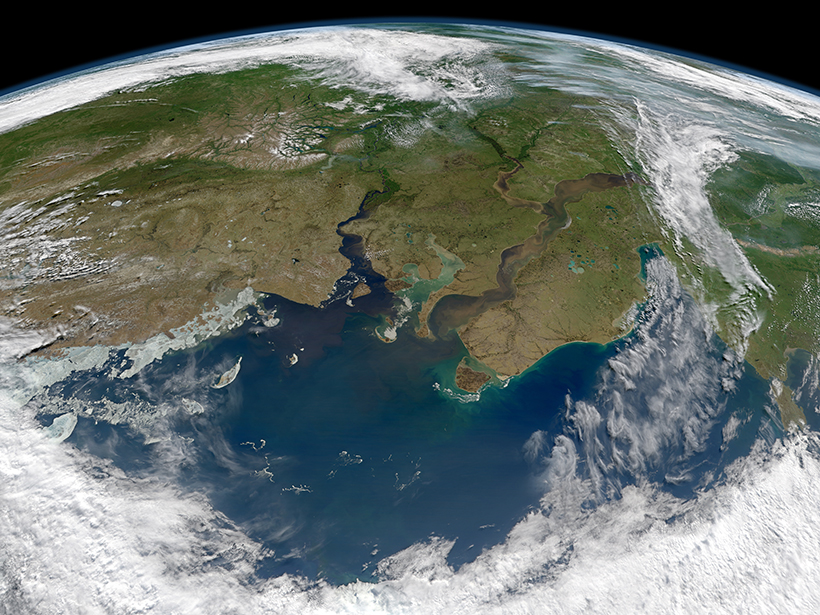Source: Geophysical Research Letters
The ocean appears blue because water molecules are better at absorbing yellow and red light than blue. But sometimes, dissolved materials from river runoff and cities alter how seawater reflects sunlight, making coastal areas appear more yellow. In a new study, Gnanadesikan et al. examined how this yellowing could impact ocean temperatures.
When organic materials break down, the colored materials they produce (referred to as colored dissolved and detrital materials, or CDM) absorb more high-energy, short-wave blue light, which normally penetrates to greater depths. This heats up water at the ocean’s surface and makes deeper layers cooler. In the new study, the authors looked at how CDM absorption affects ocean temperatures.
Typically, the computer models used to predict sea surface temperature include absorption only from the chlorophyll pigments in algae—not CDM. The team compared two different models, running each simulation for 700 years. In one, they stuck with the standard, chlorophyll-only scenario. In the second model, they added absorption from CDM.
Adding CDM made the typical seasonal cycle in sea surface temperatures more extreme. Warm summer temperatures got even warmer along the U.S. West Coast, Baltic Sea, and northeast Atlantic, for example, with increases of up to 1.5°C. Cold months got colder, increasing the span between coldest and hottest temperatures by up to 3.5°C, the team found. (Geophysical Research Letters, https://doi.org/10.1029/2018GL080695, 2019)
—Emily Underwood, Freelance Writer
Citation:
Underwood, E. (2019), How yellowing seas will affect ocean temperatures, Eos, 100, https://doi.org/10.1029/2019EO119845. Published on 12 April 2019.
Text © 2019. The authors. CC BY-NC-ND 3.0
Except where otherwise noted, images are subject to copyright. Any reuse without express permission from the copyright owner is prohibited.

